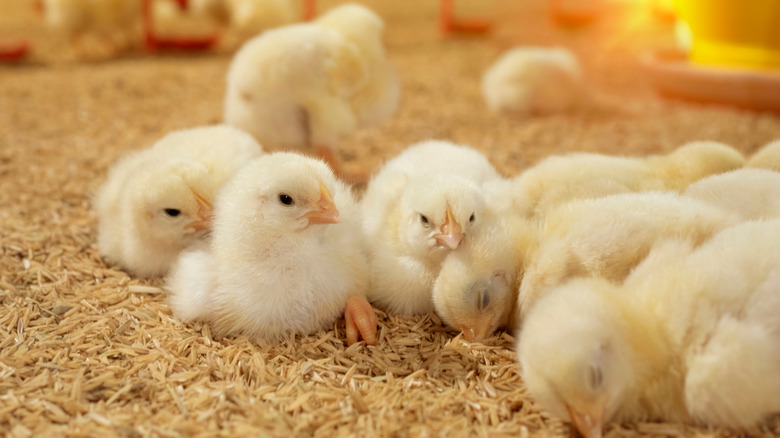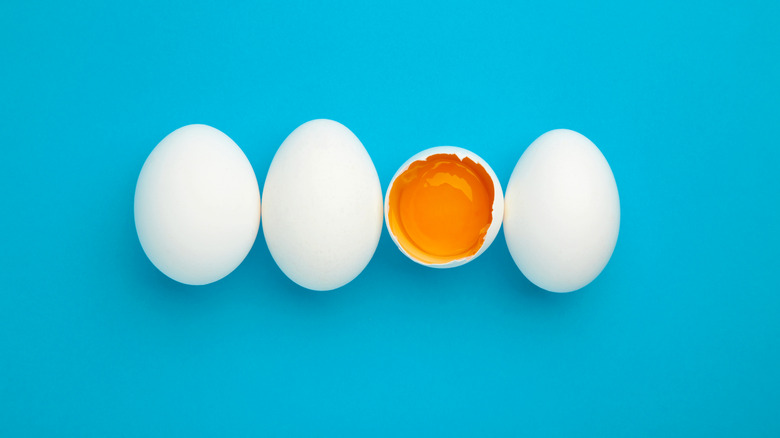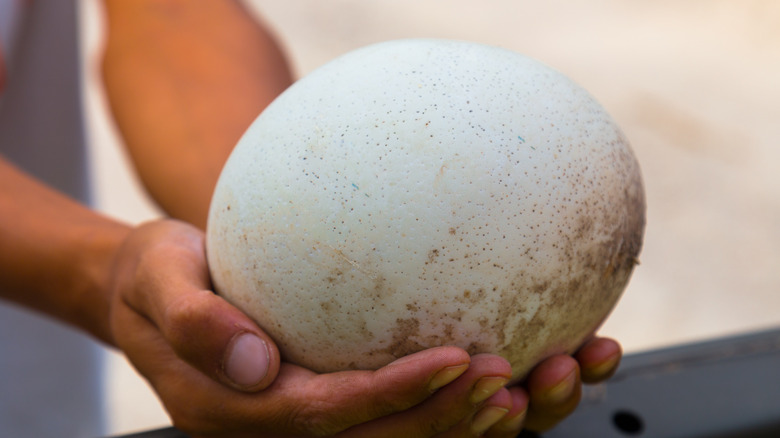The Unusual Way Baby Birds Breathe Inside Their Eggs
Procreation is the hallmark of sustainable life, but let's face it, it's also pretty dang weird, differing vastly from one species to the next on this water-filled orb we call home. Some microscopic creatures split themselves into near-identical copies. Plants produce seeds or spores or ryzomes. When we it comes to animals, there are live births and marsupials carrying half-baked progeny in pouches lined with warm membranes. Then, of course, there are our feathered cousins and their sometimes tasty birthing devices: eggs.
When an embryo is maturing in a womb, as is the case for most mammals, the offspring doesn't need to breathe because they're placenta is attached to blood vessels that provide oxygen-rich and nutrient-rich fluid through arteries the embryo shares with their mother, as Medical News Today details. Mama does all the breathing and eating for the offspring until it's strong enough to do it on it's own. In the case of plants, they open their stomas (tiny plant mouths) and start exchanging gasses as soon as they're exposed to sunlight, according to the John Innes Centre. And as Seattle Pi explains, ameba and other single-cell organisms that replicate through mitosis are fully formed from the time the little creatures split into two. Eggs, on the other hand, don't come with a mother attached to do the work for whatever immature creature is inhabiting the shell. So, how do baby birds breathe inside their eggs? Let's break it down.
An air pocket inside
Maybe you've never thought about how a baby bird breathes inside of its egg, or maybe you have. You probably know that an egg's whites and yokes both contain a plethora of nutrients, which is why chicken eggs and the like are a healthy addition to most diets in moderation, but those nutrient-dense parts of the egg don't contain enough oxygen in any usable form to support the baby birds metabolism on their own. Don't worry though, the egg has a mechanism designed to allow for enough respiration to keep that bird baby chirping.
According to Scientific American, there's actually a small pocket of air between a couple of membranes located on the other side of the shell. That little pocket provides oxygen directly to the developing bird, but baby birds hang out inside their eggs for much longer than a tiny air pocket is able to sustain. In fact, the University of Mississippi says the baby bird only literally breathes this small mass of air a few days before hatching. So, the egg does the "breathing" (gas exchange) for the developing bird in the meantime through the shell itself.
A breathing shell
A bird's eggshells aren't air-tight. As Live Science points out, all living organisms contain six essential elements, and one of those is oxygen. Without it, as far as we know, life can't exist. If an eggshell was as solid as it seems on the surface, that cute (or ugly) baby bird would deplete its oxygen stores long before it poked its beak into the fresh air. So, no, eggs aren't air-tight. They're not water-tight either.
These calcium-rich structures are actually filled with small holes that allow carbon dioxide-filled air to leave the egg so that sweet, sweet oxygen can take its place, according to the University of Utah, keeping the egg's air pocket fresh for the baby bird. In a way, the shell acts as a kind of egg lung in itself, allowing for gas diffusion in much the same way that a gas diffuses between the lungs and blood vessels until the bird can breathe air on its own. Neat, huh?
Now, birds are pretty cool animals, but their shells aren't alone in the way they breathe. Cambridge University explains that reptile eggs also diffuse air gasses through similar pores. It almost seems like evolution sticks to designs that work.


